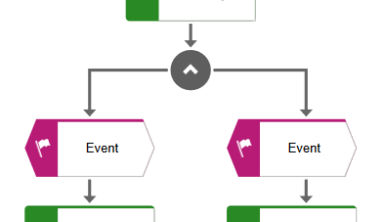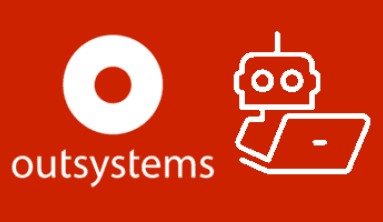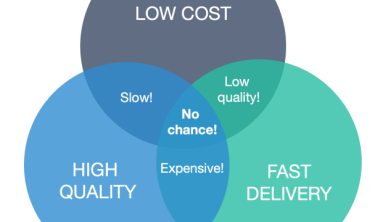With countries around the world experiencing varying levels of economic downturn, businesses might think that now is a good time to maintain (or even reduce) headcount and take a more conservative approach to recruitment.
The truth, as Sharmini Wainwright, Senior Managing Director at PageGroup, wrote in a recent article, is that it really depends on your industry, business needs, as well as financial circumstances.
“Faced with questions from clients asking us whether they should delay their team’s hiring, my teams’ answers are typically pragmatic. Do you have the budget available, the talent available, and the chance of a first-mover advantage? If the answer to each question is ‘Yes’, then now may actually be the best conditions for hiring that you’ll find in the near future.”
With that said, the same hiring challenges your business faced before the pandemic will likely persist in the weeks and months after. Here is a list of common pain points we hear from our clients, and the one thing you can do to make ‘recruiting the best and most suitable talent ’that much easier in the post-COVID world.
1. Senior management roles are hard to fill
Hiring for senior management positions was tricky enough before the pandemic. For one, several pieces need to fall in the right places for the relationship to work for all parties.
For example, beyond the credentials and experience on paper, senior management roles often require a solid set of soft skills as well, such as leadership, teamwork and the ability to learn. A reluctance to change jobs during an economic downturn is only going to make the process that much longer and more arduous.
2. Specialty field + Specialty role = Especially difficult
The challenges associated with filling senior roles are further exacerbated in niche fields that require candidates to have comprehensive prior training and certification to even be considered. Take healthcare interior design, for example.
Healthcare facilities are designed not just to meet the practical needs of patients and medical practitioners alike, they also have to adhere to a whole host of different regulations — and these regulations change all the time.
This means that an extensive career in residential, corporate and commercial interior design is simply not enough. This individual has to have a finger on the latest regulatory developments and make adjustments to the healthcare facility accordingly — a tall order for those unfamiliar with the field.
3. Trying to fill urgent roles, fast
In a recent interview, Anthony Thompson, Regional Managing Director, Asia and Executive Board Director of PageGroup, foresees an upcoming war for talent, “When we moved into this pandemic, there was very much a war for talent. There will be another war for talent on the way out. Companies will want to hire across all sectors. We’ve seen it in all past crises. It’s just a matter of when.” Opportunities, too, will come hard and fast once the economy stabilises, which means that companies will likely experience a sudden uptick in manpower needs.
This is where the pain point comes in: filling an urgent role fast, if not done with care, often comes at the cost of a quality hire. Instead of making the right hire, time-strapped businesses sometimes opt for making a hire right now. Traditional methods of recruitment like job boards are not the best options because they rely more on candidates reaching out, which can be a passive, time-consuming process.
4. Hiring in a new market is a challenge
Entering a brand new market is challenging enough as it is. Aside from local rules, regulations and cultural differences, companies also have to contend with finding the right candidates and building a team from scratch.
While big-name multinational companies might not have as much trouble attracting talent due to name recognition alone, small-to-medium-sized enterprises without a prior presence in Vietnam might not have such luxuries. In short, unless you have local partners to work with, it is hard to know what the talent pool is like, how best to reach out to the very best and what they expect from employers.
5. Conventional solutions are too general for my needs
Conventional recruitment strategies typically involve posting vacancies on job boards. And while these methods still play an important role in the future of recruitment, they are certainly not one-size-fits-all solutions.
With the competition for talent fiercer now than ever before, businesses want tailored, more targeted services to differentiate themselves, and this extends to their hiring solutions and approach to bringing top talent in as well.
Furthermore, most candidates visit job boards to look for vacancies either because they are actively looking for a new job or are interested in the available prospects — but what about those who aren’t considering a career change in the first place?
Passive candidates form a large reservoir of untapped opportunities for employers, and the only way to reach them is a tailored, more targeted approach through other channels, such as social media newsfeed or message ads.
The one thing you can do
The hiring market is changing every day, and the way we find and attract talent must evolve along with it. That is why a digital recruitment strategy is becoming an up-and-coming trend in the world of hiring.
Instead of relying solely on job boards and company websites to do the leg work, a comprehensive digital recruitment strategy reaches a bigger pool of talent by advertising across various digital channels, such as Google, LinkedIn, as well as niche job sites that cater to specific sectors.
Casting a wider net also addresses some of the most pressing pain points mentioned above, such as the need to fill urgent roles. Instead of the usual text-based job description, a comprehensive digital strategy also utilises creative tactics, such as video content, to showcase the role and the business at large — perfect at capturing the interest and attention of time-short professionals.
This means embracing and implementing a more targeted approach to sourcing, selecting and hiring candidates, from active and passive candidates to senior roles and talent in brand new markets, will take less time than ever before — and with much better ROI, too. Businesses who use this approach can therefore hire smarter and hire faster in this new normal.
Via Michael Page






